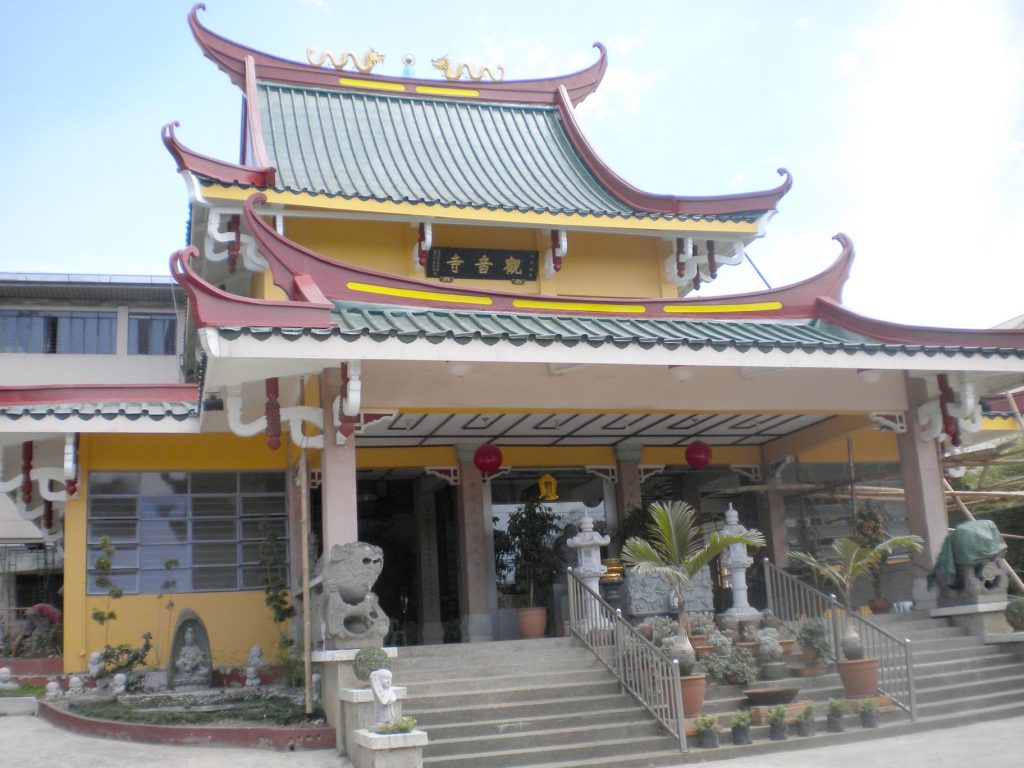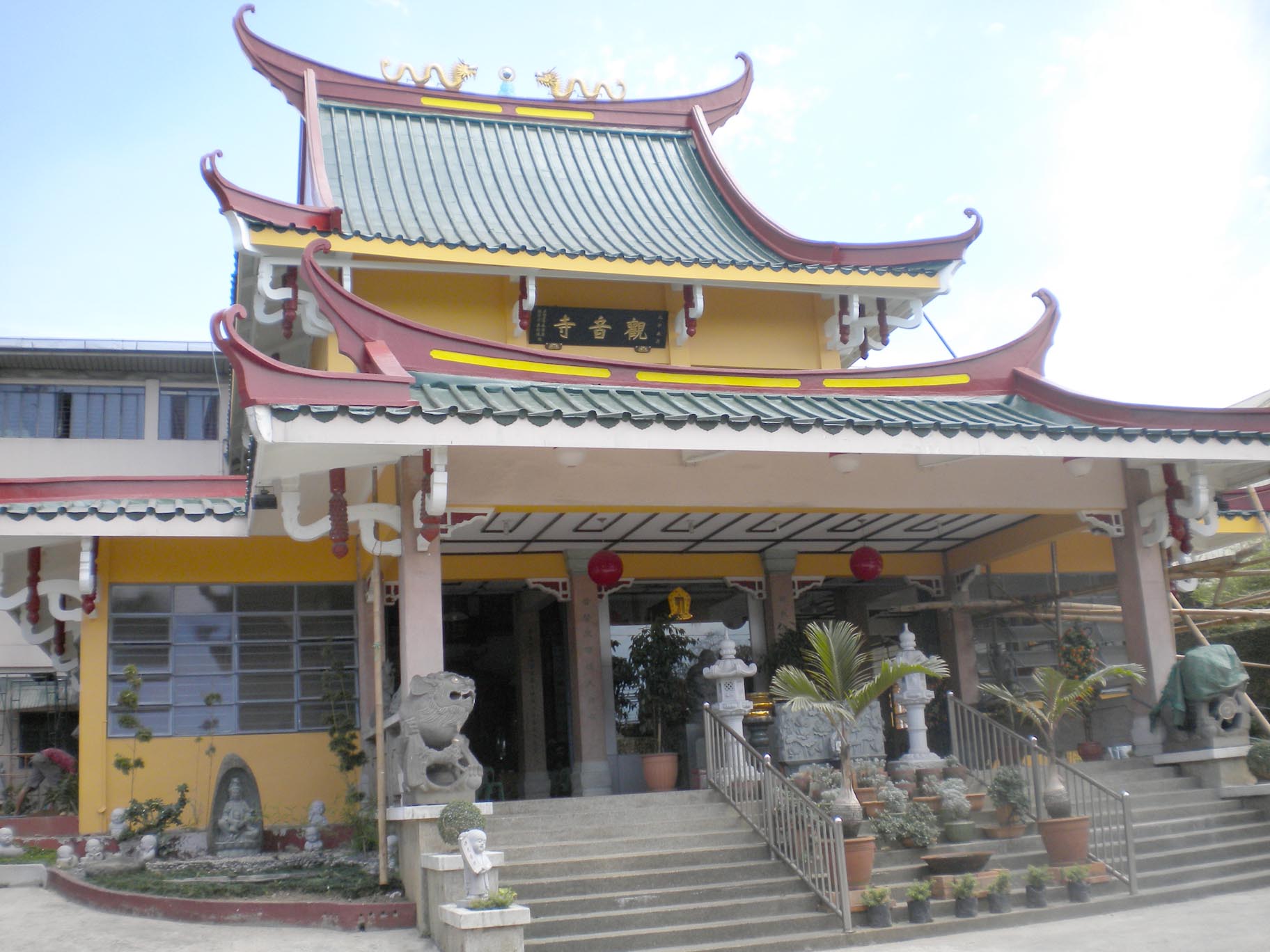Editors Note: This is the fifth of a series about the 36 Chinese Buddhist temples of the Philippines. Much of the information is from a thesis of Venerable Chuanmiao (Hsuan Chuang University, 2008), a Buddhist monk affiliated with the Thousand Buddha Temple in Quezon City.
5. Holy Buddhist Temple (觀音寺)
150 N. Domingo St., Cubao, Quezon City | Tels.: 726-7696 • 725-9138
The present temple building dates only from 1975, but the community is much older. The temple traces its roots to a statue of Guanyin brought to Manila by a Cantonese merchant in 1881, who built a private shrine in the Bangkusay district of Manila.
Responsibility for the shrine passed on to a man surnamed Shi (施), and then to a Dai Yangdan (戴養瞻), who moved the shrine to Sto. Cristo St.
Lay sister Youzhan (由拈) was put in charge in 1937. She was succeeded in 1945 by lay sister Sanglian (桑蓮).
Throughout this time, the shrine was not formally Buddhist. Folk religion was practiced and Dai was a Taoist of the Xiantian (先天) tradition.
Sanglian began as his disciple but later became Buddhist under Venerable Ruijin (瑞金) of Seng Guan Temple.
Sanglian bought the Cubao property in 1956, construction began in 1973 for the new temple, which opened in 1975.
Meanwhile, Sanglian had taken in a 5-year-old granddaughter (by an adopted son) in 1956.
The child, Miaozhen (妙真), grew up as a lay sister. She was educated in Manila at the Philippine Academy of Sakya and Chiang Kai-shek College.
When Sanglian died in 1988, Miaozhen became the temple’s abbess. In 1993, she traveled to California’s City of Ten Thousand Buddhas to train and be ordained under Master Xuanhua (宣化). From then on, she was known as Hengji (恒繼).
Hengji organized many educational and charitable activities and gained a solid reputation as an inspirational leader. In 2011, the temple celebrated its 130th anniversary.
The temple is closely linked to the Manila Buddha Temple and its branch in the north, the Baguio Buddha Temple.
Hengji served as caretaker of the two latter temples in the 1980s when her grandmother was still alive and there was no one to take care of the two temples after the monk-founders died.
At present, monks from Manila Buddha Temple often help with chanting services here.

Main buildings. The main building houses the shrine to Guanyin and a refectory. Behind it is a memorial hall dedicated to Sanglian, an ancestral hall, and a dormitory building. The Sanglian Memorial Hall links to an outdoor shed that serves as waiting area for the temple’s twice-monthly charity clinic.
Leadership and primary activities. Regular chanting services are held on the first and 15th of the lunar month, the Guanyin feast days, Buddha’s birthday, and the yearend service.
Many other feast days are observed, but the temple is unique for two spiritual practices.
First, the regular chanting services, which last only one hour, followed by a lecture and vegetarian lunch. This is meant to balance chanting with education. This temple is one of only two in the Philippines that does this religiously. The other is Ung Siu Temple (隱秀寺) in Caloocan.
Second, since 1996, starting on the first day of the eighth lunar month, the temple chants the Medicine Buddha sutra for 49 consecutive days for the nation’s peace and well-being. This is done at 8 a.m. and many lay devotees come to participate before starting their workdays. — First published in Tulay Fortnightly, Chinese-Filipino Digest 25, no. 17 (February 5-18, 2013): 8.
